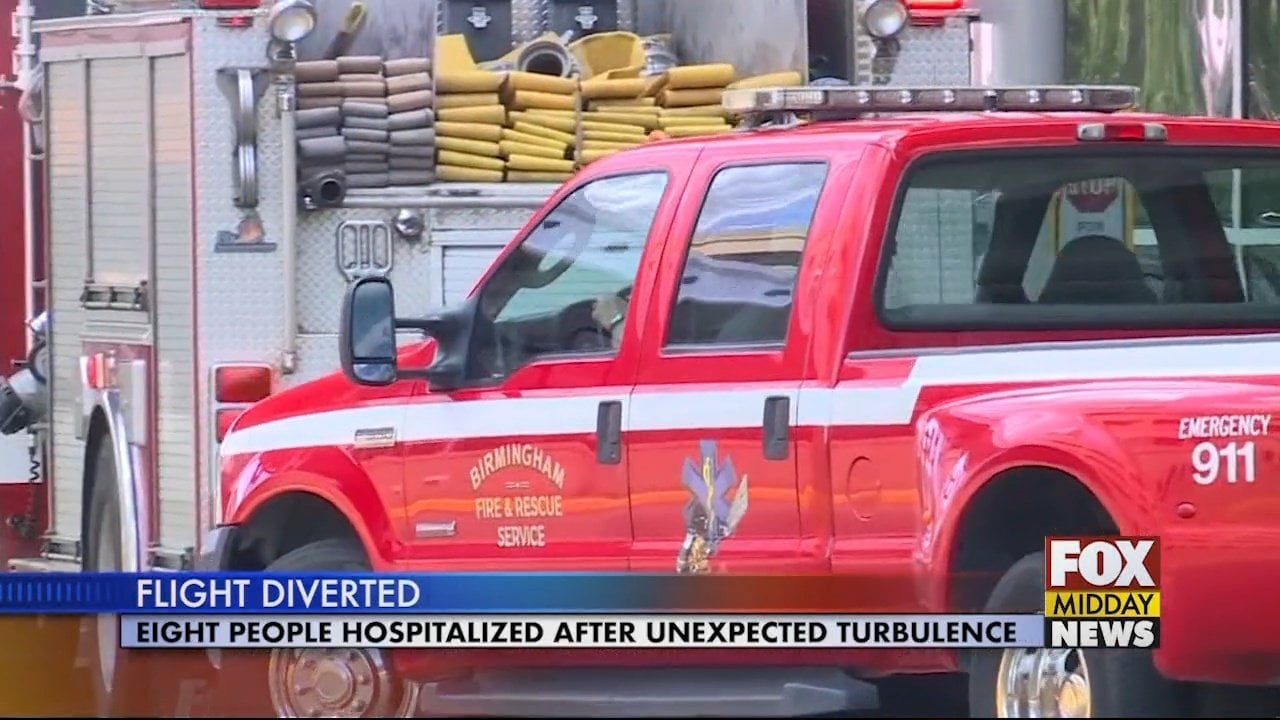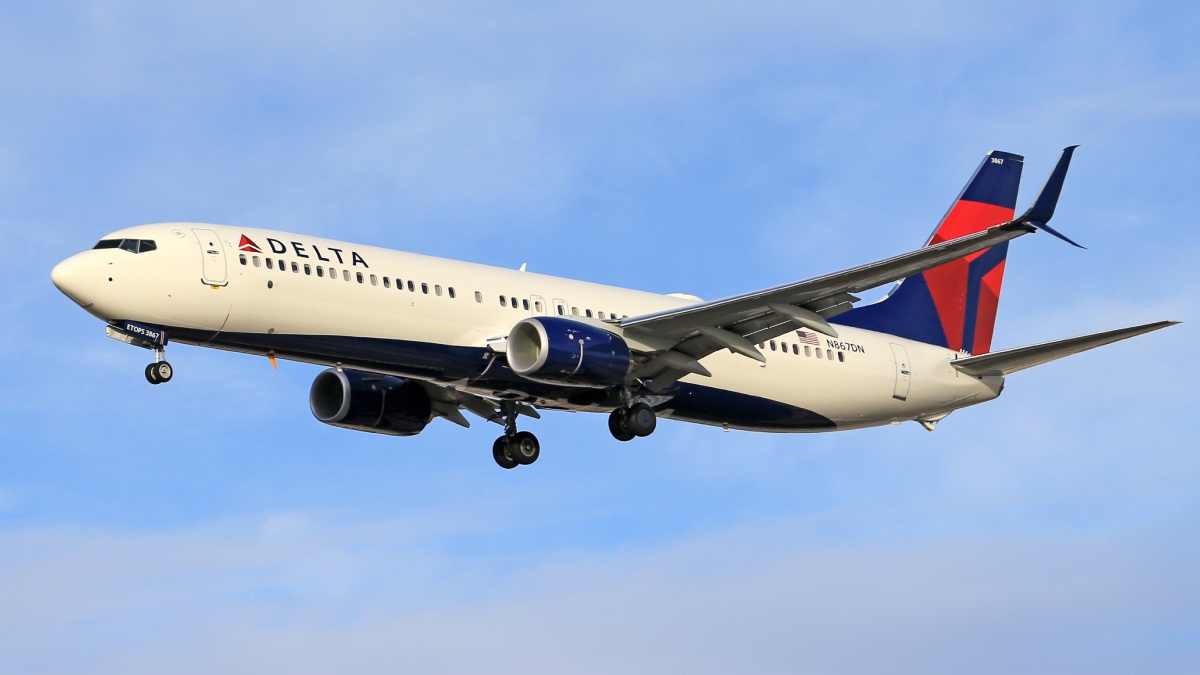Several crew members hospitalized after ‘severe’ turbulence on – Several crew members hospitalized after severe turbulence on a flight – it sounds like a movie plot, doesn’t it? But this is a real and serious issue highlighting the unpredictable forces of nature and the incredible resilience of those who work in the aviation industry. This article explores the causes, effects, and aftermath of severe in-flight turbulence, delving into the experiences of both passengers and crew, the safety protocols involved, and the steps taken to prevent future incidents.
Okay, so we’ve got several crew members hospitalized after severe turbulence – talk about a bumpy ride! It makes you think about unexpected twists and turns, kind of like how 6 Things Gladiator 2 Treats Like Plot Twists Even Though We’ve already seen them coming. Seriously, some movie plots are as unpredictable as airline travel! Hopefully, the hospitalized crew recover quickly after that scary flight.
We’ll uncover the science behind the turbulence, examine the medical consequences, and discuss how the aviation industry continues to strive for safer skies.
We’ll look at different types of severe turbulence, the meteorological conditions that cause them, and the common injuries sustained. We’ll also cover the pilot’s actions, cabin crew responses, and passenger experiences, both physical and psychological. The medical response, investigation procedures, and preventative measures will also be explored, along with illustrative examples of past incidents and how the industry learns from them to improve safety.
Severe Turbulence: A Comprehensive Overview: Several Crew Members Hospitalized After ‘severe’ Turbulence On
Air travel, while generally safe, can occasionally be disrupted by severe turbulence, a phenomenon that can cause injuries to passengers and crew. This article explores the nature of severe turbulence, the safety procedures involved, the impact on individuals, and the steps taken to prevent future incidents.
So, you heard about those crew members hospitalized after severe turbulence? Crazy stuff, right? It makes you think about other unexpected events, like checking out this FPL update: FPL notes: Fabianski injury, £4.9m forward + why Evanilson was – it’s a bit of a rollercoaster itself! Anyway, back to the plane – hopefully, those crew members are recovering well.
Severity and Nature of Turbulence

Severe turbulence is characterized by abrupt and significant changes in aircraft altitude and attitude. It can range from light chop, barely noticeable to passengers, to extreme events that can throw individuals around the cabin. Several factors contribute to its formation, including clear-air turbulence (CAT), associated with jet streams and wind shear, and convective turbulence linked to thunderstorms and other weather systems.
Injuries sustained during severe turbulence range from minor bruises and cuts to more serious fractures and internal injuries. The force of the turbulence can cause passengers and crew to be thrown against seats, overhead bins, or other objects.
| Turbulence Level | Typical Symptoms | Severity of Injury | Potential Long-Term Effects |
|---|---|---|---|
| Light Chop | Minor discomfort, slight bumping | Generally none | None |
| Moderate Chop | Noticeable bumps, difficulty walking | Minor bruises, sprains | Possibly lingering muscle soreness |
| Severe Turbulence | Sudden, violent jolts, difficulty remaining seated | Fractures, internal injuries, head trauma | Chronic pain, post-traumatic stress disorder (PTSD) |
| Extreme Turbulence | Aircraft may be thrown around violently, significant structural damage possible | Severe injuries, fatalities | Severe physical disabilities, PTSD, death |
Aircraft Response and Safety Procedures

Pilots employ various techniques to mitigate the effects of severe turbulence. These actions include adjusting the aircraft’s altitude and airspeed to avoid or minimize the impact of turbulent air masses. Standard operating procedures (SOPs) vary slightly depending on aircraft type, but generally involve maintaining control of the aircraft, ensuring passenger safety, and communicating with air traffic control. Cabin crew plays a crucial role by ensuring passengers are secured, providing assistance to those injured, and maintaining order.
A typical emergency response protocol would involve:
- Fasten seatbelt signs illuminated.
- Crew members securing loose items.
- Crew members assisting passengers.
- Post-turbulence assessment of injuries.
- Communication with ground control.
Passenger Experiences and Psychological Impact
Passenger experiences during and after severe turbulence vary widely. Some individuals may experience only mild discomfort, while others may suffer significant injuries and intense fear. The psychological impact can range from anxiety and fear of flying to PTSD. Strategies for managing passenger anxiety include clear and reassuring communication from the crew, and providing information about the situation.
Coping mechanisms for fear of flying after a severe turbulence event can include:
- Cognitive Behavioral Therapy (CBT)
- Exposure therapy
- Relaxation techniques
- Support groups
Medical Response and Treatment of Injuries, Several crew members hospitalized after ‘severe’ turbulence on
Standard medical procedures on board involve immediate first aid for injuries, ranging from minor cuts and bruises to more serious fractures and head injuries. Aircraft typically carry a limited supply of medical equipment and supplies. For hospitalized crew members, the process involves coordinating with ground medical teams, ensuring a smooth transfer to a hospital, and providing necessary medical information.
- Concussions
- Fractures
- Lacerations
- Sprains
- Internal injuries
Investigation and Prevention
Investigations into severe turbulence incidents involve analyzing flight data recorders, weather reports, and witness statements to determine the cause and contributing factors. Improvements in weather forecasting and turbulence detection technologies, such as advanced radar and satellite imagery, are constantly being developed. Aviation safety agencies play a vital role in setting safety standards, investigating accidents, and implementing measures to prevent future incidents.
Advancements in aircraft design and technology, such as improved structural integrity and more sophisticated flight control systems, can also help mitigate the impact of severe turbulence.
Illustrative Examples
A notable incident involved a commercial airliner encountering extreme turbulence over the Atlantic Ocean. The aircraft, a Boeing 747, experienced a sudden and violent drop in altitude, resulting in several injuries to passengers and crew. The investigation revealed that the turbulence was associated with a powerful jet stream. The subsequent investigation led to recommendations for improved weather forecasting and pilot training.
Imagine a passenger seated during severe turbulence. A visual representation would show the passenger being thrown forward and then backward, subjected to G-forces that push them against their seatbelt. The force vectors would be depicted as arrows indicating the direction and magnitude of these forces. The seatbelt would act as the restraining force preventing the passenger from being ejected from their seat.
The illustration would clearly show the significant forces involved and the importance of securing oneself during turbulence.
Last Word

Severe in-flight turbulence, while a relatively rare occurrence, underscores the inherent risks of air travel. Understanding the causes, consequences, and safety measures surrounding these events is crucial. From improved weather forecasting and aircraft design to enhanced emergency response protocols, the aviation industry constantly works to minimize the impact of unexpected turbulence. By learning from past incidents and implementing preventative measures, we can strive for a safer future for all air travelers.
This exploration of severe turbulence serves as a reminder of the dedication and professionalism of flight crews and the ongoing commitment to passenger safety.
Q&A
What are the long-term effects of severe turbulence injuries?
Long-term effects can vary greatly depending on the severity of the injury. Some individuals may experience chronic pain, while others might develop post-traumatic stress disorder (PTSD) or other anxiety disorders.
How common is severe turbulence?
Seriously rough flight for those crew members hospitalized after severe turbulence; it makes you appreciate the calmer dramas of life, like waiting to see if Squid Game Will Return and Conclude With an Epic Season 6. Hopefully, their recovery is swift, unlike the intense pacing of that show! Back to the turbulence though, I bet that was a wild ride.
Severe turbulence is relatively rare, but it can happen unexpectedly. The frequency varies depending on factors like weather patterns and geographic location.
What should passengers do during severe turbulence?
Follow the instructions of the cabin crew, fasten your seatbelt securely, and remain seated. Avoid walking around the cabin during turbulence.
Can I claim compensation if I’m injured during severe turbulence?
The possibility of compensation depends on various factors, including the airline’s liability and the specifics of the incident. It’s best to consult with a legal professional.